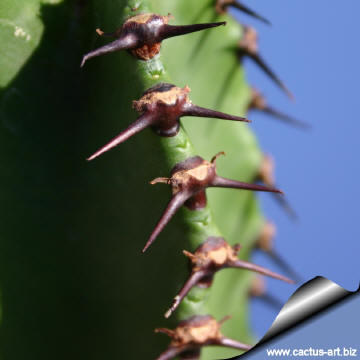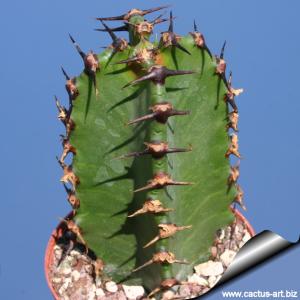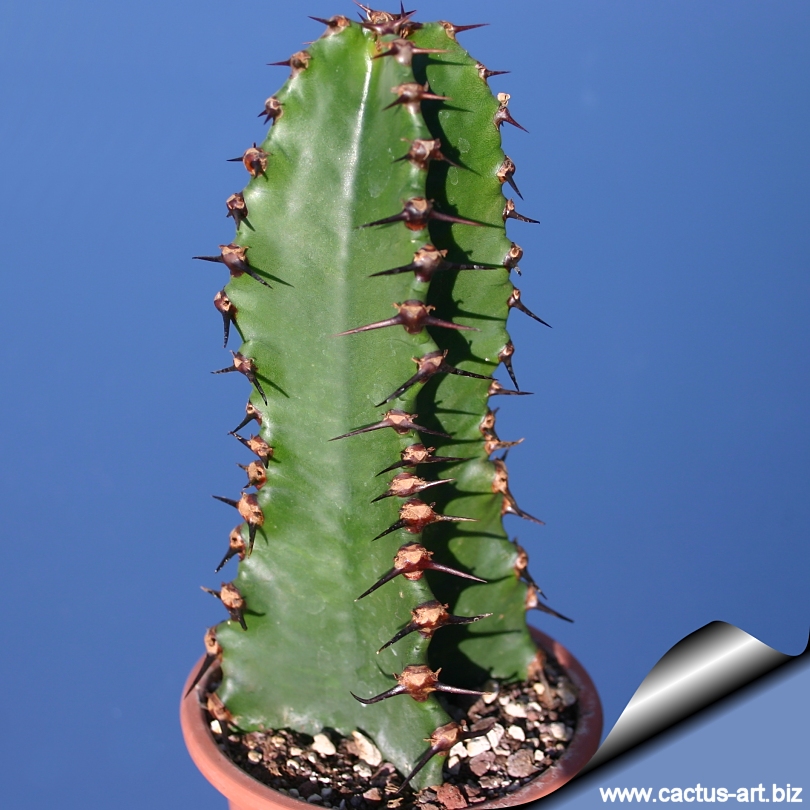-
x
Descrizione
|
Robusta e bellissima Euphorbia a candelabro proveniente dallo Yemen e dall'Arabia Saudita. I margini delle costolature sono ornati da spine appaiate di colore bruno di aspetto simile a corna di mucca.
Family: Euphorbiaceae Accepted scientific name: Euphorbia ammak Schweinfurth.
Origin: Yemen, Saudi Arabia peninsula. Habitat: Rockier areas in planes and in steep hillsides, thorny bush-lands. Conservation status: Listed in CITES appendix 2.
|
|
 |
Description: Euphorbia ammak is a striking Euphorbia of massive stature that resembles to E. candelabra but It branches but not profusely. It is a typical representative of large, tree-like Euphorbias that can grow up to 10 m tall with a short trunk, it is superficially similar to some new world Cacti. The upright broadly obconical crown of this plant make it looks like a a branched candelabra.
Cultivation: It is an easy species to grow that is suited for any well drained soil in full sun. But young plant are happy growing indoors, where they can easily reach the ceiling. Give the plant an airy growing medium which mainly consists of non organic material such us clay, pumice, lava grit, and only a little peat or leaf-mould. Water regularly during the active growing season from March to September. No water should ever be allowed to stand around the roots. Keep almost completely dry in winter. It is a moderately fast grower, and will quickly become large landscape masterpieces in just 3-5 years. Only downside is from strong winds, the columns often smash into each other, causing permanent scarring... best to plant in such a location where winds are not a big issue. If plant becomes very red, this is a sign that the roots have not developed properly. It is a relatively fast growing and long lived plant and once established, it will be content in its position and with its soil for years. It can tolerate moderate shade, and a plant that has been growing in shade should be slowly hardened off before placing it in full sun as the plant will be severely scorched if moved too suddenly from shade into sun. Like quite small pots, repott in very later winter, early spring. Can be pruned for shape and branching. Frost tender, frost free zones only.
Propagation: It is easy to propagate by cuttings in late siring to summer, just take a cutting of the plant let it dry for 1 or 2 weeks and stuff it in the ground (preferably dry, loose, extremely well draining soil).
|


